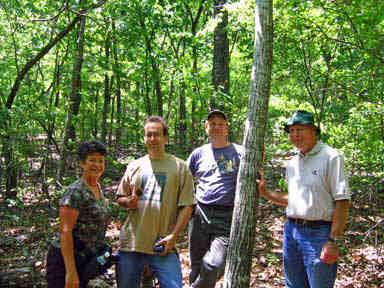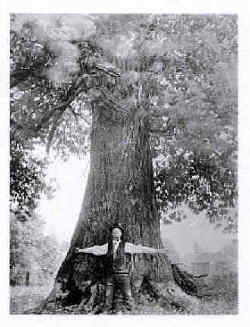 | greenville business & community directory |
|
This is an archived page that may contain outdated or incorrect information. Please visit www.Greenville.com for the latest news, events, and more.
 A grove of very rare American chestnut trees has been discovered in Georgia. The find is exciting to the scientific community and tree lovers alike, as the American chestnut had virtutally disappeared in a blight in the earlier part of the 20th century.
A grove of very rare American chestnut trees has been discovered in Georgia. The find is exciting to the scientific community and tree lovers alike, as the American chestnut had virtutally disappeared in a blight in the earlier part of the 20th century.
DNR Sr. Wildlife Biologist Nathan Klaus found a grove of flowering American chestnut trees while hikinh along a ridge line 65 Miles SE of Atlanta in the FD Roosevelt State Park. The trees, all with burs with viable nuts. show no sign of blight. The American chestnut was once one of the most important trees in eastern hardwood forests. It ranged from Maine to Georgia, and west to the prairies of Indiana and Illinois. It grew mixed with other species, often making up 25 percent of the hardwood forest. In the virgin forests of the Appalachian Mountains, the ridges were often pure chestnut. Mature trees could be 600 years old and average 4 to 5 feet in diameter and 80 to 100 feet tall. Specimens as large as 8 to10 feet in diameter were recorded.
The chestnut blight, first discovered in 1904, changed all of this. The lethal fungus sperad quickly, and by 1950, the American chestnut had virtually disappeared from eastern forests. Multiple efforts are underway to bring this precious tree back. The American Chestnut Foundation (www.acf.org) was created to coordinate a breeding program for the purpose of creating blight-resistant American chestnuts for eventual reforestation. TACF scientists are well on their way to developing a tree that is American in every way, with blight resistance borrowed from its Asian cousins. Georgia, home of this recently-discovered grove, is one of several states that now have satellite breeding programs to ensure that blight-resistant trees will be suited to local environments. For more information, and to view photos of the discovery, visit http://gatacf.org/. (Image provided by the Georgia Chapter of the American Chestnut Foundation.)
|

 The American chestnut's annual production of highly nutritious nuts was extremely reliable. At the turn of the 20th century it was ranked as one of the most important wildlife plants in the East. The nuts were a major cash crop for rural economies in the region, and many wildlife species depended extensively on them. Bear, deer, wild turkey, squirrels, many birds and small mammals - and once, the huge flocks of passenger pigeons � all waxed fat for the winter in the chestnut forests.
The American chestnut's annual production of highly nutritious nuts was extremely reliable. At the turn of the 20th century it was ranked as one of the most important wildlife plants in the East. The nuts were a major cash crop for rural economies in the region, and many wildlife species depended extensively on them. Bear, deer, wild turkey, squirrels, many birds and small mammals - and once, the huge flocks of passenger pigeons � all waxed fat for the winter in the chestnut forests.